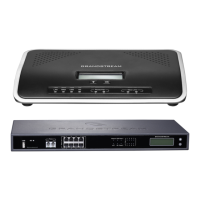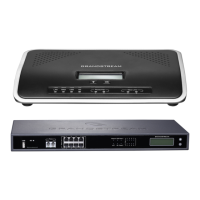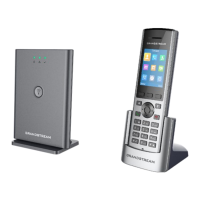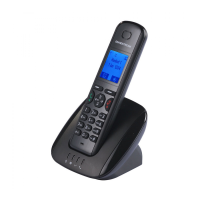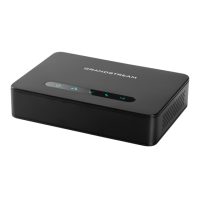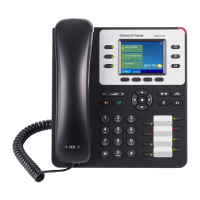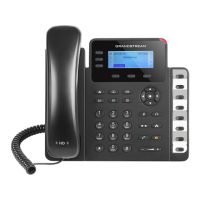UCM6200 Series User Manual
The VoIP trunk options are listed in the table below.
Table 53: Create New SIP Trunk
Select the VoIP trunk type.
Peer SIP Trunk
Register SIP Trunk
Configure a unique label to identify this trunk when listed in outbound rules,
inbound rules and etc.
Configure the IP address or URL for the VoIP provider’s server of the trunk.
Keep the CID from the inbound call when dialing out. This setting will override
“Keep Trunk CID” option. Please make sure that the peer PBX at the other side
supports to match user entry using “username” field from authentication line.
If enabled, the trunk CID will not be overridden by extension’s CID when the
extension has CID configured. The default setting is “No”.
Turn on this setting when the PBX is using public IP and communicating with
devices behind NAT. If there is one-way audio issue, usually it is related to NAT
configuration or SIP/RTP port support on the firewall.
If checked, the trunk will be disabled.
Note:
If a current SIP trunk is disabled, UCM will send UNREGISTER message
(REGISTER message with expires=0) to the SIP provider.
If the trunk has an assigned PSTN telephone number, this field should be set to
"User=Phone". Then a "User=Phone" parameter will be attached to the Request-
Line and TO header in the SIP request to indicate the E.164 number. If set to
"Enable", "Tel:" will be used instead of "SIP:" in the SIP request. The default setting
is disabled.
Configure the Caller ID. This is the number that the trunk will try to use when
making outbound calls. For some providers, it might not be possible to set the
CallerID with this option and this option will be ignored.
When making outgoing calls, the following rules are used to determine which
CallerID will be used if they exist:
The CallerID configured for the extension will be looked up first.
If no CallerID is configured for the extension, the CallerID configured for the
trunk will be used.
If the above two are missing, the "Global Outbound CID" defined in Web GUI-
>PBX->Internal Options->General will be used.
Select whether the trunk needs to register on the external server or not when
"Register SIP Trunk" type is selected. The default setting is No.
